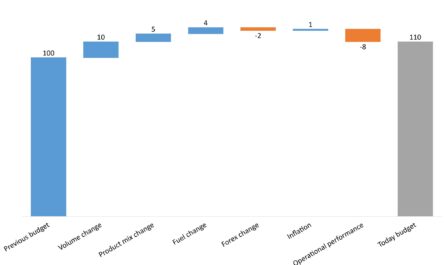In the complex world of managing how things get from one place to another and making sure everything runs smoothly, you often face tough choices. These choices happen when the decisions you make in one part of the process affect how well things work or how much they cost in another part.
Being able to make smart decisions about these choices is really important for making things work better and meeting your business goals.
In this detailed blog post, we’ll look at the common tough choices that come up in logistics and supply chain management and talk about how to make smart decisions about them.
Before we go further into this topic, don’t forget to follow my LinkedIn account. You’ll get more helpful insights on supply chain management there.
Table of Contents
Common Trade-offs in Logistics
Customer Service vs. Cost
You must balance offering great customer service with controlling expenses. Excellent service costs more, but cutting costs can upset customers. Finding the right balance depends on your business and customers.
Inventory vs. Availability
You juggle managing inventory and having products available. Too much inventory is costly, while too little can lead to stockouts. You use forecasting and tools to manage this.
Delivery Time vs. Shipping Costs
You choose between fast, expensive shipping and slower, cheaper options. Fast is costly, slow tests patience. You weigh options considering customer expectations.
Capacity vs. Flexibility
You manage capacity and flexibility. Too much capacity is wasteful, too little is inflexible. Your expertise maximizes resource use without losing adaptability.
Energy Savings vs. Performance
You balance energy savings with operational performance. Green practices may need costly tech. You assess long-term benefits and alignment with company goals.
Transportation vs. Inventory Costs
You decide how often to ship, affecting inventory costs. Frequent shipments lower inventory but raise transport costs. You consider demand, lead times, and carrying costs.

Route vs. Time Efficiency
You pick routes: efficient or quick. Short routes save time but may not be cheap. You weigh time and cost against factors like traffic and schedules.
Specialized Processing vs. Universal Capabilities
Choose between specialized or versatile facilities. Specialized boosts efficiency, but may lack versatility. You decide based on product mix and demand.
Outsourcing vs. Insourcing
Decide whether to outsource or keep logistics in-house. Outsourcing cuts costs but reduces control. Insourcing gives control but needs more investment. You align with company goals.
Quality vs. Cost
Balance product quality and production costs. High quality costs more. You consider market demand, competition, and customer expectations when setting quality standards and cost controls.
In your logistics role, you make these complex decisions to optimize operations and meet business goals in a competitive market.
You might also like:
- Navigate Traffic Jams with Ease: Embrace Proactive Strategies in Logistics!
- Why Wasting Employee Skills Is a Costly Missed Opportunity
- Stay Ahead of the Curve: Strategies for Excelling in Supply Chain Planning with Varying Lead Times
Decision-Making Process
In the world of logistics and supply chain management, your job is crucial in making smart decisions that align with your company’s goals.
Here’s a step-by-step guide to help you make these decisions.
Understand Company Goals
First, figure out what your company wants to achieve. It could be making more money, keeping customers happy, cutting costs, or other big goals. Your job is to turn these goals into logistics plans.
Pick Important Metrics
Next, choose the important numbers to watch. These could be things like how much it costs to run things, how fast things get delivered, or how happy customers are. You’ll use these numbers to see how your decisions are working.
Look at the Numbers
You collect and look at data about the decisions you’re thinking about. This means checking out how much things cost, how well they work, and other measurements in different situations. You need to be good at understanding data.
Try Different Ideas
You use your knowledge and maybe some special tools to see how different choices might work out. These tools help you see what happens if you choose one thing over another. It’s like testing ideas without actually doing them.
Think About Risks
You also think about what might go wrong with each choice. This includes things that might happen in your area of work, problems with the supply chain, or outside stuff that could mess things up. This helps you make choices that are ready for challenges.
Talk to Others
You talk to other important people in your company, like bosses and coworkers, to get their ideas. Different viewpoints help you make better decisions that match your company’s big picture.
Test Predictions
You might use tools to see what could happen in the future if you make certain choices. This helps you see what the results might be down the road.
Think About the World
You also look at what’s happening outside your company, like new laws or what customers want. These outside things can affect your choices.
Choose with Data
Finally, you make choices based on all the data and information you’ve gathered. You make sure your decisions match the numbers and plans you’ve been working with.
Keep an Eye on Things
Your job doesn’t end with a decision. You need to keep watching to see if your choices are working like you thought. If things change, you adjust your plans.
In the end, your role in logistics and supply chain management is all about making smart choices. You use data, talk to others, and think about the future to help your company reach its goals in a competitive world.
Conclusion
In your job in logistics and supply chain management, making smart choices when faced with tough decisions is really important.
It’s a bit complicated, but it’s a big part of how businesses work well.
By understanding these common tough choices, following a clear decision-making process, and being ready to change plans when needed, the companies you work with can make their supply chains work better, keep customers happy, and reach their big goals.
Your ability to make these smart decisions is a key part of successful logistics and supply chain management in today’s competitive world.
I hope you find it helpful!
Please share this article with your colleagues so they can also benefit. For more insights on supply chain management, follow my LinkedIn account. You’re free to use all articles on this blog for any purpose, even for commercial use, without needing to give credit.

 by
by 

